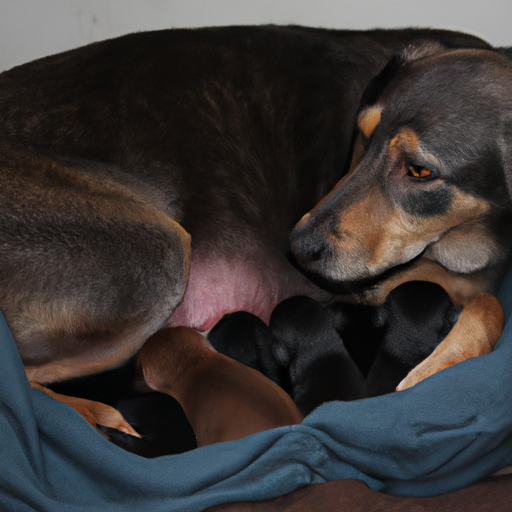As a caregiver, understanding the process of how dogs have babies is essential. This article will provide comprehensive information about canine reproduction, gestation, birth, and neonate care.
Understanding Canine Reproduction
First, let’s understand the basics of canine reproduction. Dogs, like humans, have a reproductive cycle, but there are several differences.
Female dogs, known as bitches, do not have menstrual cycles. Instead, they have estrous cycles, which occur twice a year. During the estrous cycle, female dogs experience four stages:
- Proestrus: The first stage of the estrous cycle, where the bitch attracts male dogs but is not yet ready to mate.
- Estrus: The breeding period where the female is receptive to the male.
- Diestrus: The period following mating, which lasts whether the female is pregnant or not.
- Anestrus: The resting period before the next cycle begins.
During the estrus stage, the female dog is receptive to the male, and mating can occur. This stage typically lasts for 9 days but can vary between 3 and 21 days. The female dog will readily accept the male, and copulation can occur.
The Gestation Period
Once the female dog has mated and fertilization has occurred, the gestation period begins. The average gestation period for dogs is 63 days, although this can vary by a few days either way.
During this time, the female dog will undergo several changes. You may notice an increase in appetite, weight gain, and her nipples may become more prominent. In the later stages of pregnancy, you may even feel the puppies moving around.
As a caregiver, it’s essential to provide a balanced diet and regular, gentle exercise for the pregnant dog. Regular veterinary check-ups are also crucial to monitor the health of the mother and the unborn puppies.
The Birth Process
The birth process, or whelping, can last from 2 to 24 hours. It begins with the first stage of labor, where the bitch will show signs of restlessness and may start “nesting”. You might notice a drop in her body temperature.
The second stage of labor is the actual birth of the puppies. The bitch will strain and push to deliver the puppies. Each puppy is born in an amniotic sac, which the mother will clean and remove.
The third and final stage of labor is the delivery of the placentas. Each puppy has a corresponding placenta, and it’s crucial that all are expelled to prevent infection.
Neonate Care
After birth, the puppies are entirely dependent on their mother. They are born blind and deaf, and their primary focus is feeding and staying warm.
As a caregiver, you can help by ensuring the mother is comfortable and that the puppies are feeding regularly. It’s also essential to keep the puppies warm, as they cannot regulate their body temperature at this stage.
| Week | Milestone |
|---|---|
| 1 | Puppies are born blind and deaf |
| 2 | Eyes and ears start to open |
| 3 | Puppies start to walk |
| 4 | Teeth start to appear |
| 5 | Weaning onto solid food can begin |
| 6 | Puppies can start to be socialized |
| 7 | Puppies are fully weaned |
| 8 | Puppies are ready to go to their new homes |
FAQ Section
What is the estrous cycle?
The estrous cycle is the reproductive cycle in female dogs. It typically occurs twice a year and consists of four stages: proestrus, estrus, diestrus, and anestrus.
How long is the gestation period in dogs?
The average gestation period for dogs is 63 days, although this can vary by a few days either way.
What is whelping?
Whelping is the process of giving birth in dogs. It can last from 2 to 24 hours and consists of three stages: the onset of labor, the birth of the puppies, and the expulsion of the placentas.
How can I care for the newborn puppies?
Newborn puppies are entirely dependent on their mother. As a caregiver, you can help by ensuring the mother is comfortable and that the puppies are feeding regularly. It’s also essential to keep the puppies warm, as they cannot regulate their body temperature at this stage.
When are puppies ready to go to their new homes?
Puppies are typically ready to go to their new homes at around 8 weeks old. By this time, they are fully weaned, have started to be socialized, and have received their initial vaccinations.



